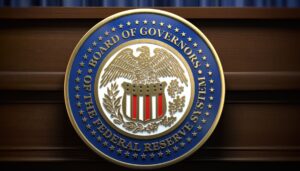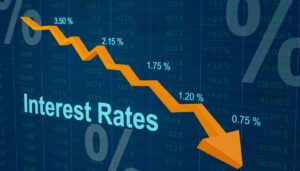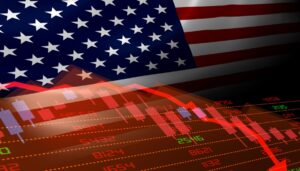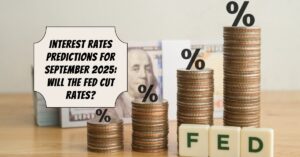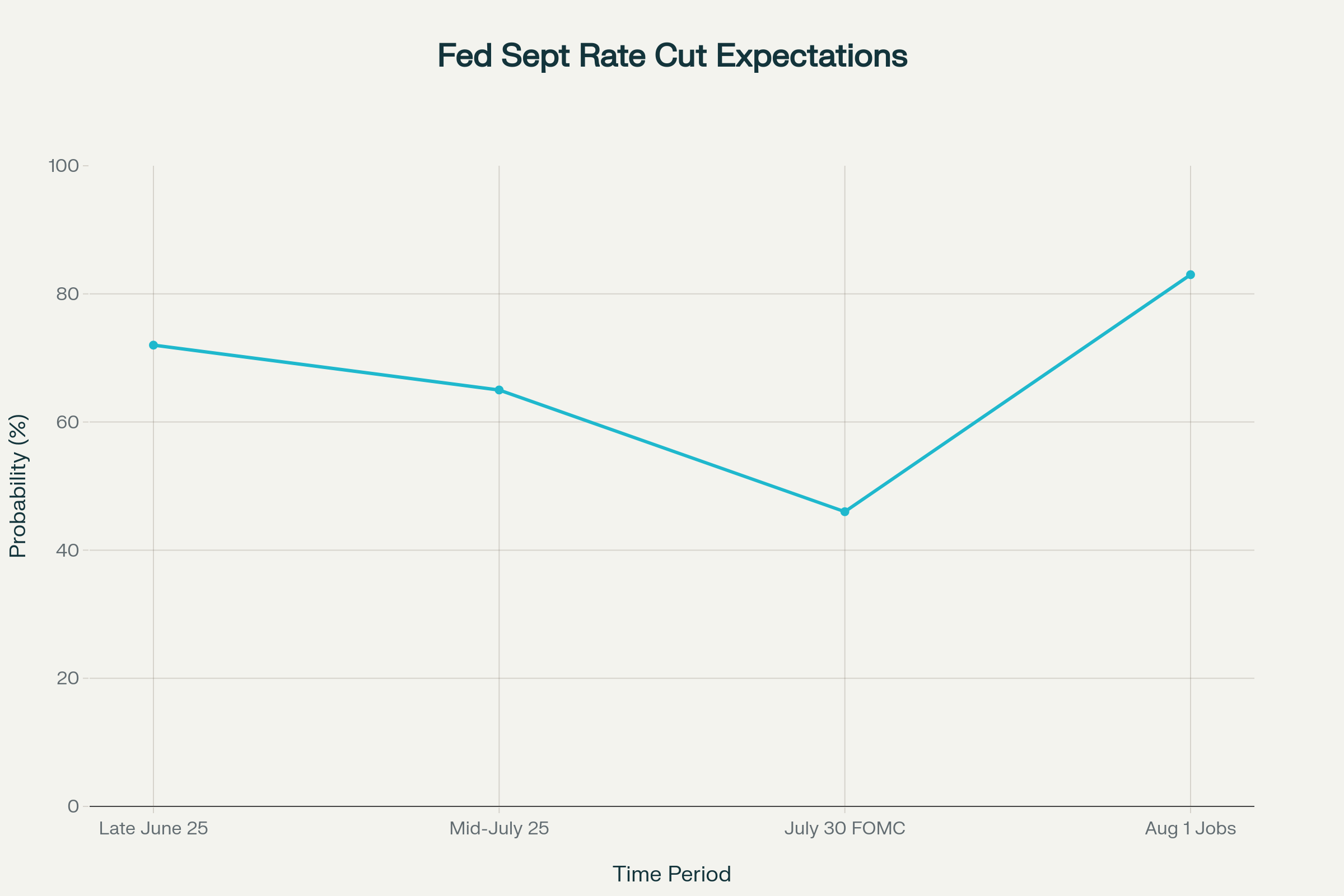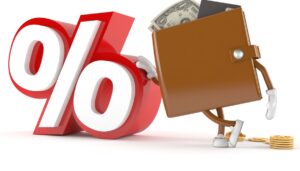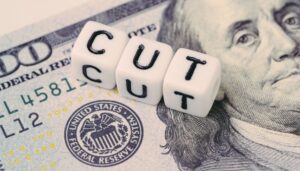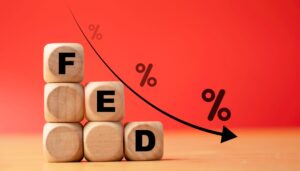In a nail-biting finish to September 15, 2025, the U.S. Senate is poised to confirm Stephen Miran as a new member of the Federal Reserve Board of Governors. This confirmation is timed so precisely that Miran could actually cast a vote on the Federal Open Market Committee's (FOMC) crucial interest rate decision, which is set to be announced tomorrow. This isn't just a routine appointment; it's happening right on the cusp of what many expect to be a significant move by the Fed to lower interest rates, a decision that could have major ripple effects across our economy.
Senate Set to Confirm Miran for Fed on Eve of Pivotal Interest Rate Decision
The timing of Miran's potential entry into the Fed is no accident. He's been nominated by President Trump, and Miran is known to favor lower interest rates. With signs of the job market cooling down, the Fed is already under pressure to ease monetary policy. Miran's presence could tip the scales, potentially pushing for a more aggressive cut than others might prefer.
This move also shines a spotlight on a familiar debate: how much influence should the President have over the Federal Reserve, an institution designed to be independent? While some believe bringing in allies with specific economic views can be beneficial, others worry it risks injecting politics into decisions that should be based purely on economic data.
Who is Stephen Miran, Anyway?
Before we dive into what this all means, let's get a clearer picture of the man at the center of this discussion. Stephen Miran, a highly educated economist, has a background that bounces between top-tier universities, the fast-paced world of finance, and the halls of government. He earned his Ph.D. from Harvard University in 2010, a prestigious academic achievement, where he studied under Martin Feldstein, someone who was a significant economic advisor during the Reagan years. This academic foundation is important because it gives him a deep understanding of economic theory.
Beyond academia, Miran has also worked in the private sector at investment firms like Fidelity and Hudson Bay Capital. These experiences gave him a hands-on understanding of how financial markets work and how different economic policies can affect investments. More recently, he served as an advisor at the Treasury Department during President Trump's first term, where he was involved in shaping economic policies, including tariffs. From March 2025, he's been heading up the White House Council of Economic Advisers, a role where he's had a direct hand in economic strategy and critiques of past government actions. This blend of academic expertise, Wall Street knowledge, and direct policy involvement makes him a unique candidate for the Fed.
The Fast Track to the Fed: Why the Rush?
What's particularly striking about Miran's confirmation process is how quickly it's happening. He was nominated in early August 2025 to fill a vacant seat on the Fed's Board of Governors. Typically, these confirmations can take a considerable amount of time, with various committees and debates involved. However, the Senate Banking Committee fast-tracked his nomination just last week, voting along party lines to send his name to the full Senate.
The Senate is using a procedural move to bundle several confirmations together for a vote tonight, which is a common tactic to speed up the President's agenda. If confirmed, Miran plans to take unpaid leave from his current role as chair of the Council of Economic Advisers. While this complies with ethics rules, it has raised some eyebrows, as it means he'll still be technically associated with the White House while serving on a body that's supposed to be independent. It’s a tightrope walk, and frankly, it feels like a deliberate effort to have him in place for this critical economic decision.
The Current Fed Board: Who's Who?
To understand the potential shift in the Fed's dynamics, it helps to know who's currently on the Board of Governors. With Miran's potential confirmation, the seven-member board would be at full strength. Here's a look at the current composition:
| Governor | Role | Term End | Key Stance Notes |
|---|---|---|---|
| Jerome H. Powell | Chair | 2026 (as Chair), Governonr until 2028 | Known for a data-driven approach; cautious on policy changes |
| Philip N. Jefferson | Vice Chair | 2027 (as VC), Governor until 2036 | Focuses on employment and inclusion |
| Michael S. Barr | Governor | 2032 | Specialist in banking regulation |
| Lisa D. Cook | Governor | 2034 | Advocate for diversity; currently facing legal scrutiny |
| Christopher J. Waller | Governor | 2030 | Generally holds a more hawkish view on inflation |
| Michelle W. Bowman | Vice Chair for Supervision | 2029 (as VC), Governor until 2034 | Expert on regional banking |
| Stephen Miran (Incoming) | Governor | January 2026 | Pro-lower rates; supports tariffs |
As you can see, Powell and Jefferson are leading the board, with Waller often seen as more hawkish. Miran’s addition could significantly shift the balance, especially considering the uncertainty around Governor Cook's legal situation. His term is quite short, ending in January 2026, meaning his influence might be concentrated in the immediate future.
The Critical September FOMC Meeting: What's at Stake?
The Federal Open Market Committee (FOMC) is the group within the Fed that decides on interest rates. They are scheduled to meet on September 16-17, with their decision announced tomorrow. The financial world is buzzing with expectations that the Fed will lower interest rates for the first time in almost a year. We're currently seeing some evidence that the job market isn't as strong as it was, and this usually prompts the Fed to make borrowing cheaper to encourage spending and economic activity.
Right now, the target range for the federal funds rate, which influences many other interest rates in the economy, is 4.25% to 4.50%. The prevailing market view, based on many economic indicators, is for a cut of about 25 basis points (which is one-quarter of a percentage point). However, Miran's known preference for lower rates could encourage a more significant cut, perhaps 50 basis points. This aligns with President Trump's public calls for the Fed to be more aggressive in lowering rates to boost economic growth. Fed Chair Jerome Powell, however, has consistently emphasized that the Fed makes its decisions based on solid data and is mindful of inflation risks, especially those that might be caused by tariffs on imported goods.
A Look Back: The Fed's Rate Journey
To understand where we are, it's useful to see how the Fed's interest rates have changed recently. The Fed has been actively managing interest rates to combat inflation after the pandemic.
| Date | Federal Funds Target Range | Key Event/Context |
|---|---|---|
| March 2020 | 0.00%-0.25% | Emergency cuts due to COVID-19 |
| March 2022 | 0.25%-0.50% | Start of rate hikes to fight inflation |
| July 2023 | 5.25%-5.50% | Peak of the rate hike cycle |
| July 2024 | 5.25%-5.50% | Hold steady after aggressive hiking |
| September 2024 | 4.75%-5.00% | First cut, a 0.50% reduction |
| March 2025 | 4.50%-4.75% | Continued gradual easing |
| September 2025 (Expected) | 4.00%-4.25% or 3.75%-4.00% | Potential deeper cut, possibly influenced by Miran |
This table shows how the Fed has gone from extremely low rates during the pandemic to raising them significantly to control inflation, and now is considering lowering them again. The decision tomorrow will be the next step in this cycle.
Miran's Economic Philosophy: A Look Under the Hood
To really understand the potential impact of Miran's confirmation, it's important to look at his economic thinking. He believes that the government has a role to play in guiding the economy, and that sometimes, this means using tools like tariffs to level the playing field in global trade. He's argued that tariffs can be used to protect domestic industries and job growth. This is a viewpoint that differs from some free-market advocates who believe that free trade always leads to the best outcomes.
Miran has also been critical of certain government spending and regulatory policies, arguing they can sometimes stifle growth or contribute to inflation. His perspective is that economic policy should be practical and aimed at delivering tangible results for the people. In his own words, he's suggested that “pure independence” for the central bank might not be the best approach, implying that some accountability to elected officials is necessary. This is a significant statement because the Fed's independence from political pressure is seen by many as crucial for its ability to control inflation and maintain economic stability.
The Broader Debate: Independence vs. Influence
This entire situation brings up a really important question about the Federal Reserve's independence. For decades, the Fed has operated as a largely separate entity from the day-to-day politics of Washington. This independence is meant to allow the central bank to make tough decisions, like raising interest rates to combat inflation, even if those decisions are unpopular with politicians or the public. The idea is that this shields monetary policy from short-term political winds.
President Trump, however, has been very vocal about his desire for lower interest rates and has openly criticized Fed officials who haven't aligned with his views. His nomination of individuals like Miran, who share his economic outlook, is seen by some as an effort to reshape the Fed's thinking. Critics worry that this could lead to the Fed making decisions that are more politically motivated than economically sound, potentially leading to higher inflation or economic instability down the road. On the other hand, supporters argue that having diverse perspectives on the Fed board is healthy and that Miran's background brings valuable insights. They might point out that even with political influence, the Fed's data-driven culture can act as a buffer.
My Take on It All
From my perspective, watching these events unfold is always fascinating, and frankly, a little unnerving. I've spent years reading economic reports and trying to understand what moves markets and affects everyday people. The independence of the Federal Reserve is something I’ve always valued. It allows policymakers to make decisions that are best for the long-term health of the economy, even when those decisions are tough in the short run. President Trump has always been a president who isn't afraid to shake things up, and his approach to the Fed is certainly a part of that.
Miran's background is certainly impressive, but the timing of his potential confirmation—right before such a crucial interest rate decision—raises a lot of questions. Will he be a moderating voice, or could his presence lead to a more aggressive easing of monetary policy that might stoke inflation later on? The arguments about whether he'll indeed take leave from his White House role while serving at the Fed also strike me as a bit of a procedural dance. It’s essential that the Fed maintains its credibility, and actions that even appear to intertwine political influence with monetary policy can chip away at that trust.
The incoming rate decision itself is critical. We've seen the economy slow down a bit, so a rate cut makes sense. But how big should that cut be? And what about those tariffs? They introduce a layer of complexity because they can push prices up, even as the Fed tries to manage interest rates. Miran's vote could be the deciding factor in whether we see a gentle easing or a more substantial push towards lower rates. It’s a delicate balance, and having a new member whose views are so closely aligned with the President’s at this exact moment is, to say the least, a significant development.
Looking Ahead: What This Means for You
So, what does all this mean for the person on the street? If the Fed does cut rates broadly, and Miran is confirmed, we could see lower borrowing costs. This might make it a bit cheaper to get a mortgage or a loan. However, if trade policies continue to drive up the prices of goods you buy, those savings might not feel as significant. The real test will be how the Federal Reserve navigates these challenges moving forward. Will it maintain its focus on long-term economic stability, or will political considerations play a more prominent role? That's the question on everyone's mind, and the confirmation of Stephen Miran seems to be a major step in that ongoing story.
Position Your Portfolio Ahead of the Fed’s Next Move
The Federal Reserve’s next rate decision could shape real estate returns through the rest of 2025. Whether or not a rate cut happens, smart investors are acting now.
Norada Real Estate helps you secure cash-flowing properties in stable markets—shielding your investments from volatility and interest rate swings.
HOT NEW LISTINGS JUST ADDED!
Talk to a Norada investment counselor today (No Obligation):
(800) 611-3060
Recommended Read:
- Fed Interest Rate Predictions This Week: 25 Basis Point Cut Widely Expected
- Fed Holds Interest Rates Steady for the Fifth Time in 2025
- Fed Projects Two Interest Rate Cuts Later in 2025
- Interest Rate Predictions for the Next 3 Years: 2025, 2026, 2027
- When is Fed's Next Meeting on Interest Rate Decision in 2025?
- Interest Rate Predictions for the Next 10 Years: 2025-2035
- Will the Bond Market Panic Keep Interest Rates High in 2025?
- Interest Rate Predictions for 2025 by JP Morgan Strategists
- Interest Rate Predictions for Next 2 Years: Expert Forecast
- Fed Holds Interest Rates But Lowers Economic Forecast for 2025
- Fed Indicates No Rush to Cut Interest Rates as Policy Shifts Loom in 2025
- Fed Funds Rate Forecast 2025-2026: What to Expect?
- Interest Rate Predictions for 2025 and 2026 by NAR Chief
- Market Reactions: How Investors Should Prepare for Interest Rate Cut
- Impact of Interest Rate Cut on Mortgages, Car Loans, and Your Wallet
